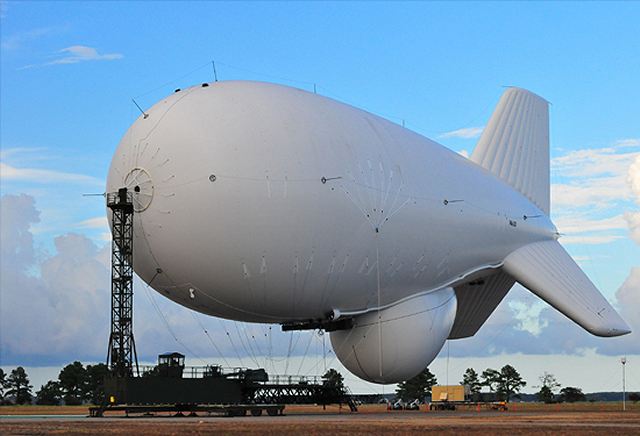Breaking news
U.S. Army soldiers ready to use JLENS to detect attack cruise missile and other threats 1408122.
| a | |||
Defense Industry News - Raytheon |
|||
| |
|||
| Tuesday, August 14, 2012, 09:49 AM | |||
| U.S. Army soldiers ready to use JLENS system to detect attack cruise missile and other threats. | |||
Combatant
commanders moved one step closer to being able to detect, track and engage
threats such as swarming boats and incoming cruise missiles, around the
clock, from hundreds of miles away. In June 2012, the first class of U.S.
Army soldiers completed mission operator training on the Raytheon Company
(NYSE: RTN) JLENS elevated, persistent over-the-horizon sensor system.
|
|||
 Raytheon’s JLENS aerostat flies over Elizabeth City, N.C. demonstrating the cruise missile system’s first official flight Aug. 25, 2009. |
|||
"Now
that the classroom studies and simulation activities are complete, these
soldiers are fully prepared to begin structured, on-the-job training on
the actual JLENS hardware," said Dean Barten, the U.S. Army's JLENS
product manager.
JLENS uses a powerful integrated radar system to detect, track and target a variety of threats. This capability better enables commanders to defend against threats, including hostile cruise missiles, low-flying manned and unmanned aircraft, large caliber rockets, and moving surface vehicles such as boats, SCUD-launchers, automobiles and tanks. "JLENS tracks a wide range of targets at extremely long ranges providing commanders minutes to identify and respond to incoming threats instead of the handful of seconds provided by current systems," said David Gulla, vice president of Global Integrated Sensors for Raytheon's Integrated Defense Systems business. "JLENS could be tested abroad today to evaluate its effectiveness in defending assets critical to our national security." During the class, soldiers learned to use JLENS to detect and target incoming cruise missiles, and track ships, cars, trucks and boats. They also practiced setting up the system and communicating information gleaned from JLENS sensors to U.S. Army, Navy and Air Force counterparts. About JLENS A JLENS system, referred
to as an orbit, consists of two tethered, 74-meter aerostats connected
to mobile mooring stations and a communications and processing group.
|
|||



















